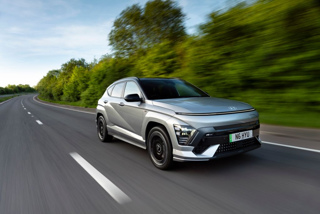By Paul Lawrence, managing director of AddSecure UK, North America and Australia
UK fleet operators will be aware of the pending changes to road safety beginning in October 2024, with Vision Zero becoming a national target by 2030.
The safety of vulnerable road users, such as pedestrians and cyclists, is also becoming strictly standardised across Europe and much of the globe.
As Transport for London (TfL) and the European Union (EU) work together to prepare for long-term changes to vehicle design and safety regulations, fleet operators should be readying heavy goods vehicles (HGVs) to ensure safe and successful passage through Europe and the UK.
To operate in Greater London from October 28, 2024, HGVs over 12 tonnes must have a minimum three-star Driver Vision Standard (DVS) rating as part of the Mayor of London’s Vision Zero campaign.
Vehicles that fail to achieve this will face fines, including a potential Penalty Charge Notice of £550 per vehicle.
This flagship campaign has prompted action to reduce fatalities from other UK cities, including Birmingham and Leeds, however, the strategy was first implemented in Sweden in the 1990s, with Norway and Finland following suit.
The European Union has now also adopted this long-term goal and aims to reduce the number of deaths and serious injuries on European roads by 2050.
The Vision Zero strategy aims to tackle many elements of road safety, including introducing stricter speed limits, reducing traffic and promoting greener ways of travel, as well as improving the vision and visibility of HGVs on the roads.
If an HGV over 12 tonnes fails to meet the three-star minimum threshold, operators will be required to fit a Progressive Safe System (PSS) to continue their operations in the Greater London area, including a fully operational camera monitoring system fitted to the nearside of the vehicle to eliminate blind spots, a Blind Spot Information System (BSIS) and a Moving Off Information System (MOIS) to warn of hazards outside the driver’s range of vision.
Vehicles will also be required to have audible alerts fitted for left turning and visual warning decals to spread responsibility of road safety to users both on and off the road.
HGVs make up 15% of fatalities across Europe, with 4,000 deaths each year. This is primarily caused by the traditional ‘brick’ shaped cab that limits the driver’s visibility of vulnerable road users.
In 2019, the EU agreed a new safety regulation and set out new requirements to reduce blind spots to the front and side of vehicles and enhance the direct visibility of road users.
The new European standards will govern how much of the road drivers must be able to see directly rather than through mirrors or cameras, with the changes requiring an additional 80-90cm of cab length to improve aerodynamics, vision, safety and driver comfort.
Any HGV models sold in Europe will have to meet these standards by September 2025.
A second regulation, the Vehicle General Safety Regulation (GSR), was also introduced in the Summer of 2022, impacting all HGVs travelling across Europe, including the UK.
These new safety measures encourage the use of life-saving technologies to protect vulnerable road users and vehicle occupants and mitigate human error.
The GSR introduced required safety features for HGVs including an emergency stop signal, reversing information, tyre pressure monitoring system, moving off information system, blind spot information system and intelligent speed assistance to enhance road safety.
There are multiple factors to consider for fleet operators managing HGVs crossing European borders, and an increased risk of fines if regulations are not met.
From the 150,000 HGVs that enter London each year, to over three million goods vehicles travelling to Europe from Great Britain annually, most HGVs travelling across the continent will be affected by the measures.
To ensure a successful passage, operators should research the necessary changes for their vehicles to mitigate the risk of fines and help reach Vision Zero across the UK and Europe.




















Login to comment
Comments
No comments have been made yet.